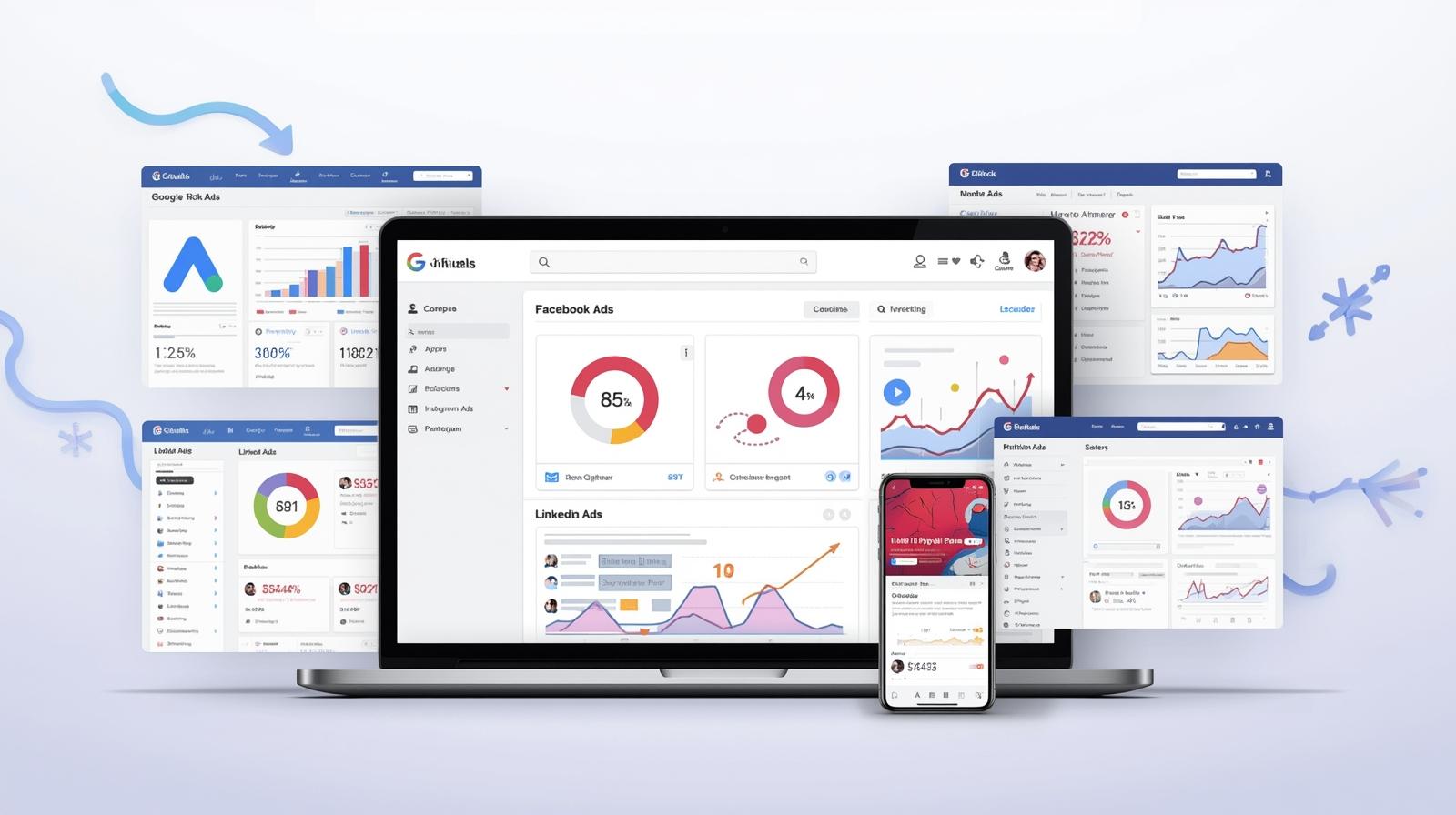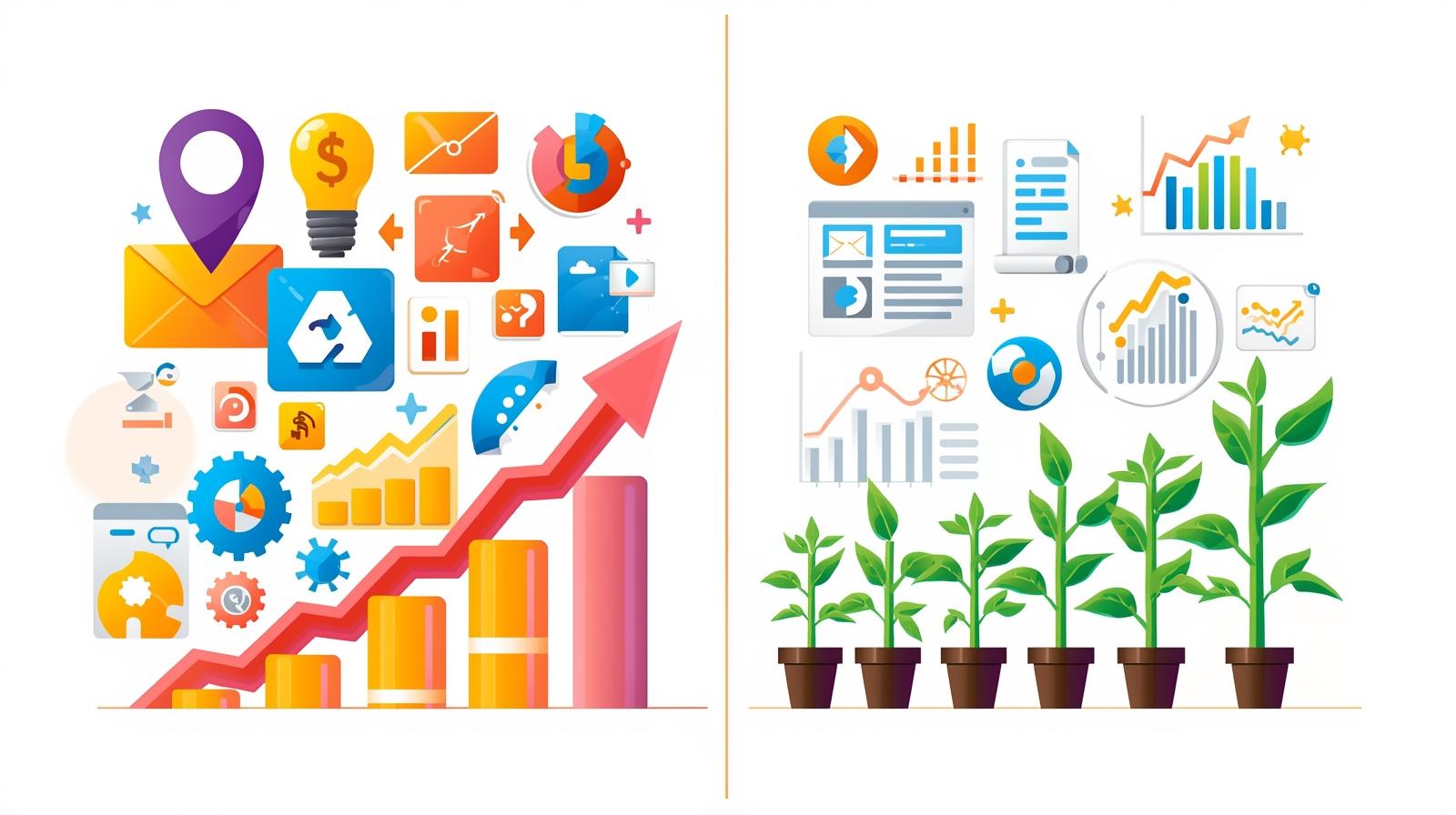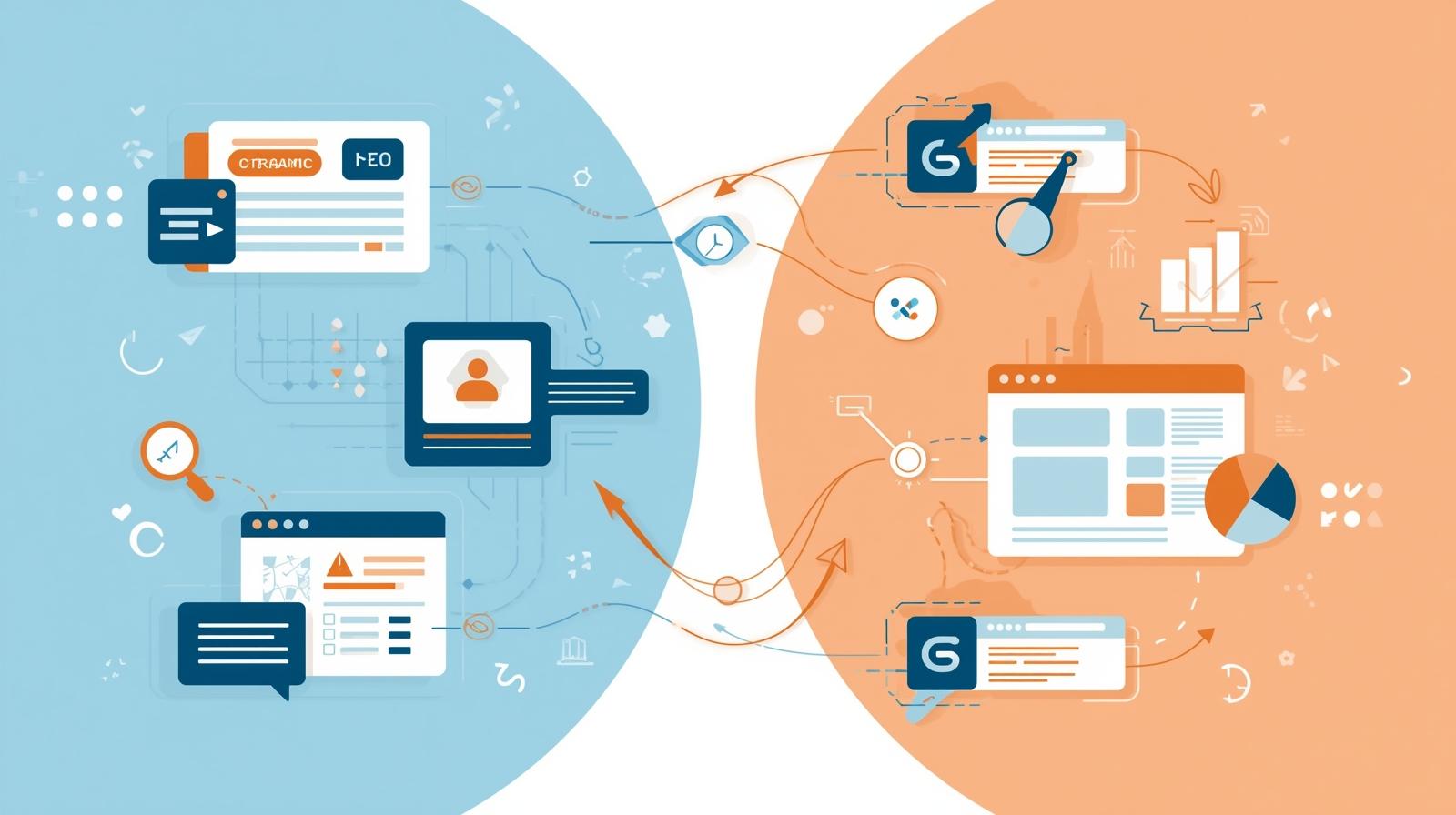This debate on Paid Advertising vs Organic Growth is essential for businesses aiming to thrive in today’s fast-paced digital marketplace.
Choosing the right digital marketing strategy can attract qualified leads, boost conversions, and maximize ROI, while relying on guesswork risks wasting both time and resources.
Paid advertising, including platforms like Google Ads, Facebook, Instagram, and LinkedIn Ads, offers immediate visibility and precise targeting.
In contrast, organic growth—achieved through SEO, content marketing, and social media engagement—builds long-term authority, trust, and sustainable traffic.
Understanding the strengths, limitations, and appropriate use cases for Paid Advertising vs Organic Growth is essential for crafting a digital marketing strategy that delivers measurable results and drives meaningful ROI.
What Is Paid Advertising?
Paid advertising refers to marketing campaigns where businesses pay to promote their products or services to a targeted audience. Common examples include Google Ads, Meta Ads (Facebook and Instagram), LinkedIn Ads, and TikTok Ads.
Unlike organic methods, paid ads provide immediate visibility to potential customers, allowing brands to quickly drive traffic, generate leads, and increase conversions.
The main advantages of paid advertising include immediate traffic, precise targeting, and scalable campaigns. Marketers can segment audiences by demographics, interests, behaviors, or location, ensuring that their ads reach the most relevant prospects.
Campaign performance is also measurable in real time, enabling quick adjustments to improve results and maximize ROI.
However, paid advertising comes with some limitations. It requires an ongoing budget, and results often stop once spending ceases.
Cost-per-click (CPC) rates can fluctuate, impacting campaign efficiency and overall return. Over-reliance on paid ads without complementary strategies can make marketing efforts expensive and unsustainable over time.
For businesses looking to achieve fast, measurable results, integrating paid ads into a broader digital marketing strategy can provide the necessary boost, especially when combined with long-term organic initiatives.

What Is Organic Growth?
Organic growth refers to attracting visitors and generating leads naturally, without direct advertising spend. This strategy relies on creating valuable content and optimizing it for search engines, social media, and other digital channels.
Common examples include SEO (search engine optimization), content marketing such as blog posts and videos, and social media engagement through posts, community interaction, and influencer collaborations.
The main advantages of organic growth are sustainable traffic, enhanced trust, and long-term ROI. By consistently producing high-quality content, businesses can establish themselves as authorities in their industry, build meaningful relationships with their audience, and continue attracting traffic over time without additional spend.
Organic marketing also supports brand credibility, as users tend to trust content that provides value rather than paid promotions.
On the flip side, organic growth takes longer to show results and requires consistent effort. Building SEO authority, creating engaging content, and nurturing social media communities demand time, resources, and strategy.
Despite the slower pace, the benefits compound over time, making organic growth a cost-effective strategy for long-term success.
Integrating organic marketing into a comprehensive digital marketing strategy ensures businesses not only drive immediate results through paid ads but also secure a stable foundation for future growth.
Comparing ROI: Paid Ads vs Organic Growth
When deciding between paid advertising and organic growth, understanding the ROI of each approach is essential. Paid ads deliver immediate results, driving traffic and conversions quickly.
Businesses can see a direct return on their investment and adjust campaigns in real time based on performance metrics.
In contrast, organic growth generates a long-term ROI, building sustainable traffic and brand authority over months or even years. While the results are slower to appear, they often continue compounding without additional spending.
From a cost perspective, paid advertising requires a continuous budget. Businesses must allocate funds for each click, impression, or conversion, and results typically stop when the budget ends.
Organic growth, however, involves an initial investment in content creation, SEO, and engagement strategies, but the resulting traffic continues to grow and deliver value over time.
Key metrics to measure success include conversions, cost per acquisition (CPA), and customer lifetime value (CLV). Paid campaigns allow precise tracking of conversions and immediate evaluation of ROI, while organic strategies require analytics to measure traffic growth, engagement, and long-term impact.
Businesses that monitor performance across both channels can optimize their marketing budgets, maximize returns, and strike the right balance between short-term wins and sustainable growth.

Paid Advertising vs Organic Growth: When to Use Each Strategy
Understanding when to use paid advertising versus organic growth is crucial for crafting an effective marketing strategy. Each approach serves different business objectives, and knowing their strengths ensures you allocate resources efficiently.
Paid advertising is ideal for immediate needs. It works well for product launches, seasonal promotions, or campaigns where quick traffic and fast conversions are critical.
Paid ads also allow businesses to test new audiences, optimize targeting, and measure results in real time. When executed correctly, they provide instant visibility and measurable outcomes that can accelerate growth.
Organic growth, on the other hand, excels in long-term initiatives. It is best suited for brand building, fostering trust, generating sustainable leads, and creating consistent, long-term traffic.
By investing in SEO, content marketing, and social media engagement, businesses establish authority in their industry and cultivate relationships with their audience, which contributes to ongoing growth without continuous ad spend.
A well-planned digital marketing strategy often combines both approaches, using paid campaigns to jumpstart visibility while allowing organic efforts to build credibility and sustain traffic over time.
Knowing when to prioritize paid or organic tactics enables businesses to maximize ROI and achieve a balanced, results-driven strategy.
The Power of Combining Paid and Organic Strategies
- Why integrated campaigns outperform isolated efforts.
- Using paid ads to accelerate organic growth (retargeting visitors, boosting high-performing content).
- Optimizing landing pages for both paid and organic traffic.
Measuring ROI in Paid Advertising vs Organic Growth
Measuring the performance of both paid advertising and organic growth is essential for maximizing ROI and refining your overall digital marketing strategy.
Using the right analytics tools allows businesses to track results accurately, identify high-performing channels, and make data-driven decisions.
Popular tools include Google Analytics 4 (GA4), HubSpot, and Salesforce, which can monitor traffic, leads, conversions, and revenue attribution across paid and organic campaigns.
Tracking conversions from both channels helps marketers understand which strategies drive results and where to focus resources for maximum impact.
Analyzing performance data also enables optimized budget allocation. By identifying campaigns or content that generate the highest ROI, businesses can adjust spending to favor high-performing segments, reduce wasted ad spend, and improve overall efficiency.
Regular monitoring ensures that paid and organic strategies complement each other, creating a smarter, more sustainable marketing approach that drives both immediate results and long-term growth.
Conclusion
Both paid advertising and organic growth play critical roles in a successful digital marketing strategy. Paid campaigns act as a short-term accelerator, delivering immediate traffic, leads, and measurable results.
Organic growth, on the other hand, serves as a long-term foundation, building brand authority, trust, and sustainable traffic that continues to deliver ROI over time.
For businesses looking to maximize their results, the best approach is a blended strategy that combines the speed of paid advertising with the sustainability of organic growth.
By leveraging both methods strategically, companies can achieve faster lead generation, higher conversion rates, and lasting business success.
Take a moment to evaluate your current marketing strategy and consider how integrating paid and organic tactics could enhance your results.
Partnering with a trusted digital marketing agency can also provide the expertise and insights needed to design campaigns that drive measurable growth and long-term ROI.



